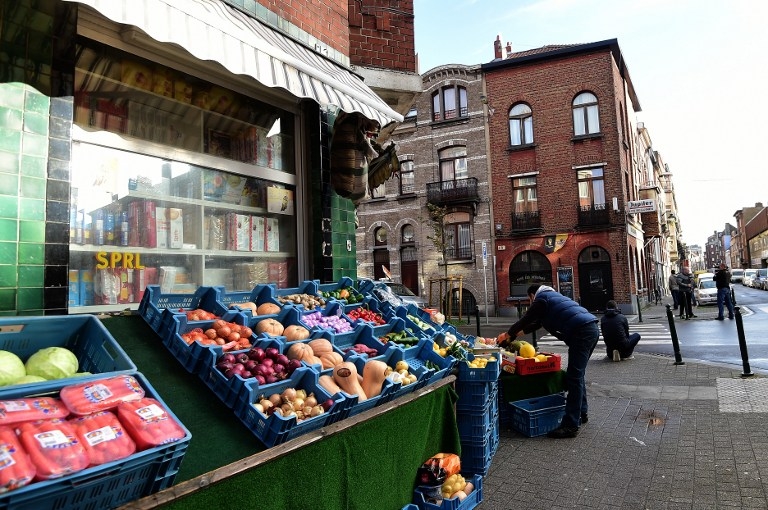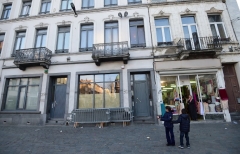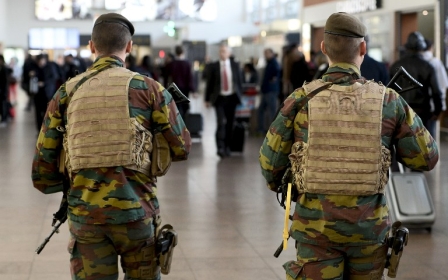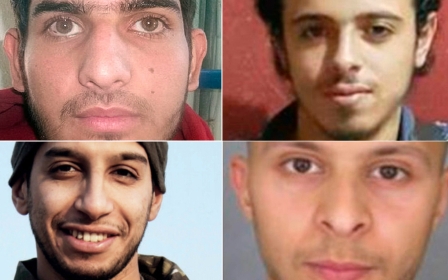Belgium turned blind eye on Molenbeek for years

MOLENBEEK, Belgium – The streets of this Brussels neighbourhood are now quiet. Only a few days after the Paris attack and the discovery that many of those involved prepared the attacks from the heart of Molenbeek, the usual traffic and busy street vendors have vanished from the public sphere. Locals are speechless.
Sylvie Vandamme, who has lived in Molenbeek for more than five years, was one of the few people in the street late this week, taking her young daughter to school.
“Molenbeek is a notorious neighbourhood, it has always been like that,” she told Middle East Eye. “Nevertheless, I wouldn’t want to live somewhere else. The cultural diversity is exactly what I like about it.”
In the main street of Molenbeek shops filled with fashion for Muslims alternate with traditional Belgian shops that have been here for decades. Vandamme is almost a minority as a Flemish-speaking Belgian in Molenbeek where the majority of the population has Moroccan roots, and the languages most often spoken are French and Arabic.
Vandamme’s daughter goes to school right behind the corner of what is believed to be the stronghold of the Paris attackers. One of the suspects, 26-year-old Salah Abdeslam, managed to flee from Paris and was believed to be hiding here.
For several hours on Monday, the police closed off the street to evacuate everyone from a gray townhouse - one like most of the homes on that street - where Abdeslam was believed to hide, but without great success. Although Abdeslam was spotted in Molenbeek after the Paris attacks, he seemed to have left again. Up until now, nobody knows where he is. And with the death of Abdelhamid Abaaoud, the alleged "mastermind" behind the attacks, who was killed in a Paris raid early on Wednesday, Abdeslam is the most wanted Belgian terrorist at the moment.
“Molenbeek is a quiet place, safe even, and it has its issues just like any other town,” said Gerard Lebon, a neighbour who came to look at the camera crews. “Nobody cares for Molenbeek. Only when there is bad news, the media alights here. When will they come here to tell a positive story? That’s what we need.”
Lebon is not the only one who’s upset, although many for different reasons than his.
Researchers, aid workers and journalists who have been reporting on Molenbeek for decades said that, although this week’s news has put Molenbeek in the spotlight, they are not fresh revelations.
“When I came here for the first time, in the eighties, Molenbeek was already a breeding place for criminality,” said Johan Leman, chairman of the integration centre, Le Foyer.
“The police are understaffed, the population almost entirely consists of youth and the unemployment reaches the highest peak here,” Leman explained. He said that he repeatedly reported dangers and urged the government to invest in the integration of the neighbourhood and, in his opinion, the government hadn’t done enough to prevent the youth of Molenbeek from isolation and even radicalisation.
Seeing it coming
Teun Voeten is a war photographer and an anthropologist who lived in Molenbeek for nine years before he moved away because he couldn’t deal with its problems any longer. Last year, he published a photo reportage on the neighbourhood, berating Molenbeek as “an ethnic religious enclave of a closed and narrow community’”.
His stand evoked turmoil in the neighbourhood, but he was not the first one to criticise Molenbeek. A decade ago, the Belgian investigative journalist Hind Fraihi warned in her reports of the dangerous rise of Salafism in the streets of Molenbeek. She didn’t get an audience. Instead, locals in Molenbeek insulted her and policymakers and politicians didn’t want to hear what she was saying.
Last Saturday, when Voeten stood in Paris on the Boulevard de Voltaire near the Bataclan where the catastrophe happened, taking photos of the crime scene, he heard rumours of the involvement of a car with Belgian license plates. "Molenbeek" was the first thing he thought of.
The question is often raised about whether the suspects of these crimes were already known within the state security - and they were. Both Salah and his brother, Brahim, had been arrested earlier this year as there were signs that both were being radicalised, according to Eric Van der Sypt, spokesperson at the Belgian federal police.
Bilal Hadfi, one of the suicide bombers near the Stade de France, had also been on Belgian police radar since January, according to a spokesperson for the country's minister of justice.
But above all, the people of the neighbourhood knew them, and they knew them as exemplary boys. None of the boys had lived in poverty or came from dysfunctional families. Their radicalisation appears to have happened despite a lack of socio-economic reasons. Neighbours and friends are not the only ones who didn’t see this coming. Mohamed Abdeslam, the brother of two of the perpetrators of the Paris attacks, told reporters this week that he has never noticed anything special or alarming.
Many have warned that this type of thing could happen in Molenbeek, and both the current government and the former one are blamed for not taking the terror threats serious enough.
"The regime of Philip Moureaux (the former mayor of Molenbeek) lasted for 20 years, and was equal to 20 years of keeping the eyes closed," Jan Gypers, an alderman from Molenbeek, said. "There were no controls and no following up whatsoever."
Middle East Eye propose une couverture et une analyse indépendantes et incomparables du Moyen-Orient, de l’Afrique du Nord et d’autres régions du monde. Pour en savoir plus sur la reprise de ce contenu et les frais qui s’appliquent, veuillez remplir ce formulaire [en anglais]. Pour en savoir plus sur MEE, cliquez ici [en anglais].






